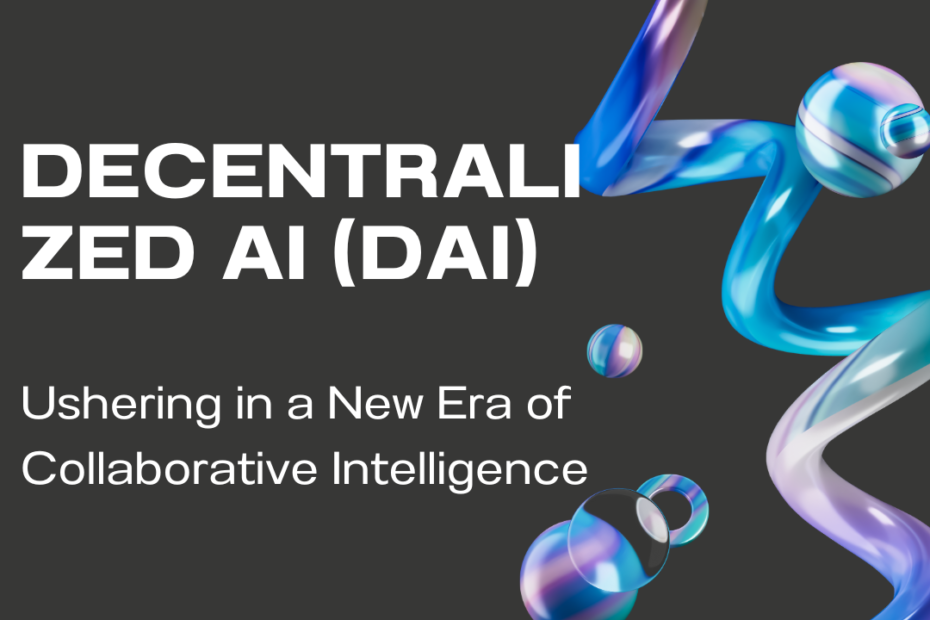Traditional Artificial Intelligence (AI) models are often shrouded in secrecy. Developed by large corporations and research institutions, these models are trained on vast datasets housed in centralized servers. This lack of transparency raises concerns about bias, accountability, and accessibility. Decentralized AI (DAI) emerges as a revolutionary paradigm shift, aiming to democratize AI by distributing its development and application across a peer-to-peer network.
Demystifying the Centralized AI Model
Centralized AI models function like black boxes. Companies leverage their immense computational resources to train complex algorithms on massive datasets. While these models can deliver impressive results, several drawbacks exist:
- Opacity: The inner workings of these models are often a closely guarded secret. This lack of transparency makes it difficult to identify and address potential biases within the algorithms.
- Data Silos: Companies often hoard their data, hindering collaboration and hindering the development of more robust AI models.
- Accessibility: Access to cutting-edge AI technology is often limited to large corporations with the resources to invest in its development.
Unveiling the Promise of Decentralized AI
DAI offers a compelling alternative to the centralized model. By leveraging blockchain technology, DAI distributes the tasks of training, storing, and utilizing AI models across a network of computers. This paradigm shift unlocks a multitude of benefits:
- Transparency: Blockchain technology provides an immutable record of all transactions on the network. This inherent transparency allows users to scrutinize the training data and decision-making processes behind AI models, fostering trust and accountability.
- Collaboration: DAI empowers individuals and organizations to contribute their data and computational resources to the training of AI models. This collaborative approach fosters the development of more diverse and representative AI models.
- Fairer Access: DAI removes the gatekeepers of traditional AI. By distributing the resources and tools for AI development, DAI allows anyone to participate in the creation and utilization of AI models.
Envisioning the DAI Marketplace: A Collaborative Ecosystem
Imagine a vibrant marketplace where anyone can contribute to or utilize AI models. Here’s a glimpse into what this future might hold:
- AI Model Sharing: Developers can upload pre-trained AI models onto the DAI network. These models can be anything from image recognition software to natural language processing engines.
- Monetization Opportunities: Contributors can set access fees for their models, allowing them to recoup the costs of development and incentivize further contributions.
- Curated Model Selection: A system of reputation and review can help users identify and select the most reliable and effective AI models for their specific needs.
- Collective Learning and Improvement: DAI models can be continuously improved through a collaborative learning process. As users interact with the models, they can provide feedback that is used to further refine the algorithms.
The Road Ahead: Challenges and Opportunities
While the potential of DAI is undeniable, several challenges need to be addressed before it can reach its full potential:
- Scalability: Training complex AI models requires significant computational resources. Distributing this workload across a decentralized network necessitates innovative solutions to ensure scalability.
- Security: The security of the network and the integrity of the data are paramount. Robust security protocols must be established to safeguard against malicious attacks.
- Standardization: As the DAI ecosystem evolves, establishing common standards for data formats, communication protocols, and model interoperability will be crucial.
Despite these challenges, the potential benefits of DAI are immense. By fostering transparency, collaboration, and accessibility, DAI has the potential to revolutionize the way AI is developed and utilized. As we move towards a future powered by AI, DAI offers a path towards a more inclusive, equitable, and democratic landscape for artificial intelligence.
Potential Applications of Decentralized AI
The applications of DAI extend far beyond a simple marketplace for pre-trained models. Here are some exciting possibilities that DAI unlocks:
- Federated Learning: DAI can facilitate secure federated learning, where multiple devices collaboratively train an AI model without sharing their individual datasets. This approach protects user privacy while enabling the development of powerful AI models.
- Decentralized Assistants: Imagine a personal assistant that is not beholden to a single corporation. A DAI-powered assistant could leverage the collective intelligence of the network to provide users with unbiased and personalized recommendations.
- Democratization of Scientific Research: DAI can empower researchers to share and collaborate on AI models for scientific discovery. This could accelerate breakthroughs in fields like medicine, materials science, and climate change.
- Enhanced Cybersecurity: DAI-powered security systems can leverage the collective intelligence of the network to identify and mitigate cyber threats in real-time. This collaborative approach could significantly improve online security.
- Autonomous Organizations (DAOs): DAI can play a crucial role in the governance of DAOs. By leveraging AI models for decision-making, DAOs can operate with greater efficiency and transparency.
The Future of Work in a Decentralized AI Landscape
The rise of DAI will undoubtedly reshape the future of work. Here are some potential implications:
- Rise of the Citizen Developer: With user-friendly tools and a collaborative environment, DAI can empower individuals to become citizen developers, creating and contributing AI models without extensive technical expertise.
- Decentralized Workforce: DAI can facilitate the creation of a decentralized workforce, where individuals can contribute their skills and expertise to AI projects on a global scale.
- Shifting Skillsets: While some jobs may be automated by AI, DAI will also create new opportunities for those with skills in data analysis, model development, and network security.
Conclusion: A Call for Collaboration
The development of DAI is still in its nascent stages. However, the potential for this technology to revolutionize the field of AI is undeniable. By fostering collaboration, transparency, and accessibility, DAI offers a path towards a more equitable and beneficial future for artificial intelligence. As we move forward, it is crucial for researchers, developers, and policymakers to work together to address the challenges and unlock the vast potential of Decentralized AI.

